Could we finally see the end of overcrowded trains?
- Published

Passenger numbers have risen 43% over the last 10 years, but investment has not kept up
Britain's railway infrastructure owner Network Rail has unveiled ambitious plans for an advanced digital signalling system that will allow 40% more trains to run on existing lines without building more track. For those passengers facing daily overcrowding and delays, change can't come quick enough, writes Adrian Quine.
"There are only two carriages on this train and people are standing," says retired doctor Andrew Thornton, as he travels from Preston to Manchester on a crowded off-peak train.
"But on our line along the Cumbrian Coast there's often only one [carriage]," he adds.
"All the investment seems to be in the south, we have had nothing up here," says his wife Marion.
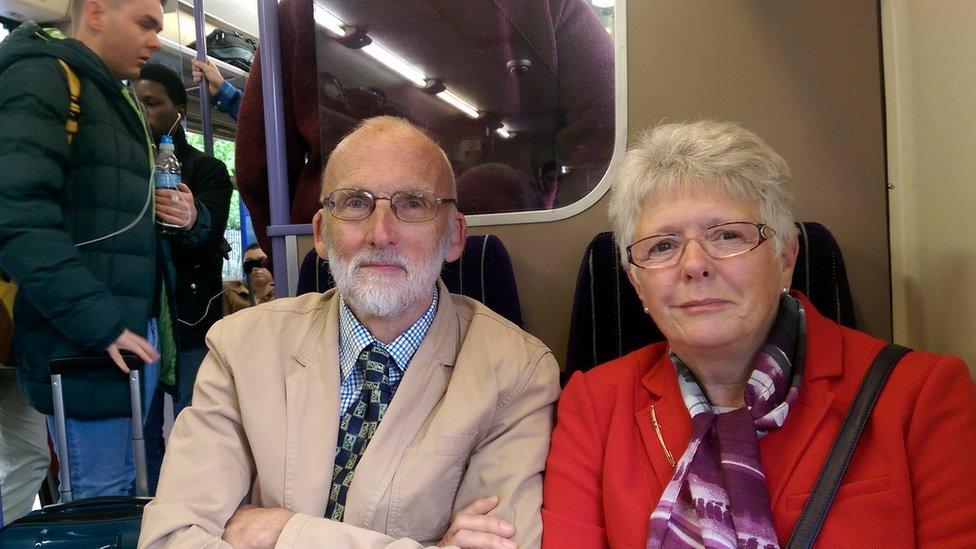
Andrew and Marion Thornton would like to see more investment in rail in the north of England
The number of us using the UK's rail network has risen 43% over the past decade, resulting in widespread congestion and overcrowded trains. Underinvestment in the past has compounded the problem.
Go slow
North-west England is one of the worst affected areas, with a shortage of trains.
Although new rolling stock is now being built, without urgent investment in the Victorian-era infrastructure there will be little improvement in train speeds or frequency.
Currently trains are controlled by fixed signals - similar to road traffic lights - and the principle of only one train at a time between any two signals has not changed since the railways were built in the 19th Century.
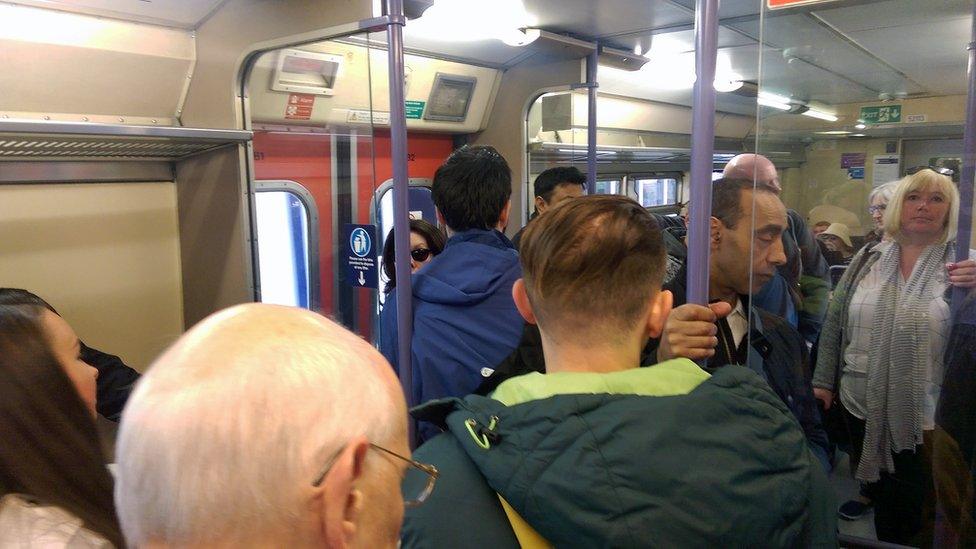
The current network is "not really fit for purpose", says Virgin Trains managing director Phil Whittingham
Initially men with flags were positioned along the track to keep trains safely apart.
Today a mix of 100-year-old mechanical semaphore signals and modern LED colour lights have replaced them but the principle remains the same.
"The current network is not really fit for purpose," says Phil Whittingham, managing director of Virgin Trains on the West coast.
"We're hoping to carry over 50 million passengers by 2026 and to do that we need some flexibility with our paths and our trains to meet passenger demand."
Doubling capacity
The current system is very inefficient and doesn't make best use of the network's available space.
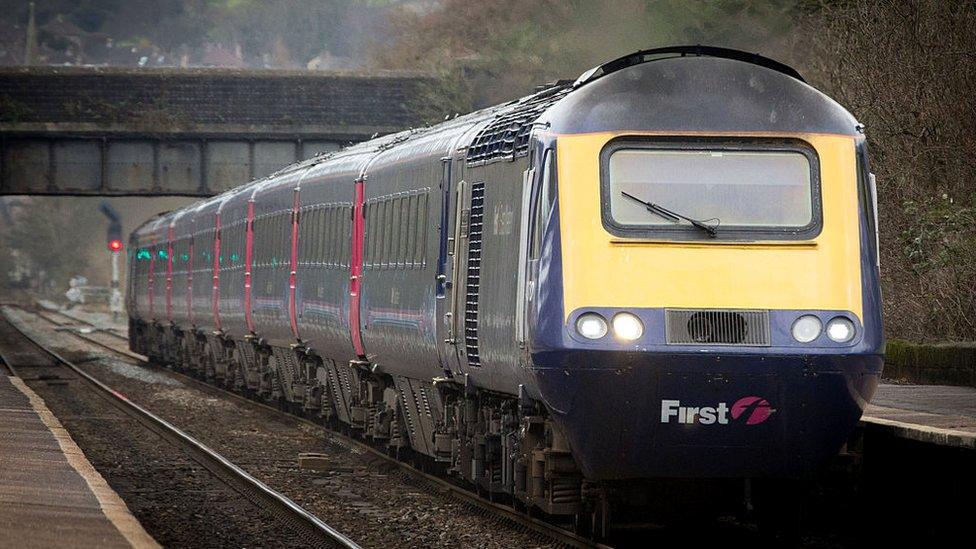
The principles of the current signalling system have not changed since the Victorian era
Imagine sitting in your car at a set of red traffic lights; the lights turn green but only allow the first car to pass leaving everybody else stationary.
With the current signalling system creating near-gridlock in some areas, radical change is urgently needed.
The proposed new digital system, known as European Train Control System (ETCS), sweeps away signals completely.
It allows trains to run much closer together; safety margins are determined by a train's speed and braking capacity rather than fixed signals.
On low-speed lines trains will run much closer together, similar to road traffic in urban areas. On high-speed lines they will be further apart but even here gaps will be cut from three minutes to 90 seconds, potentially doubling capacity.
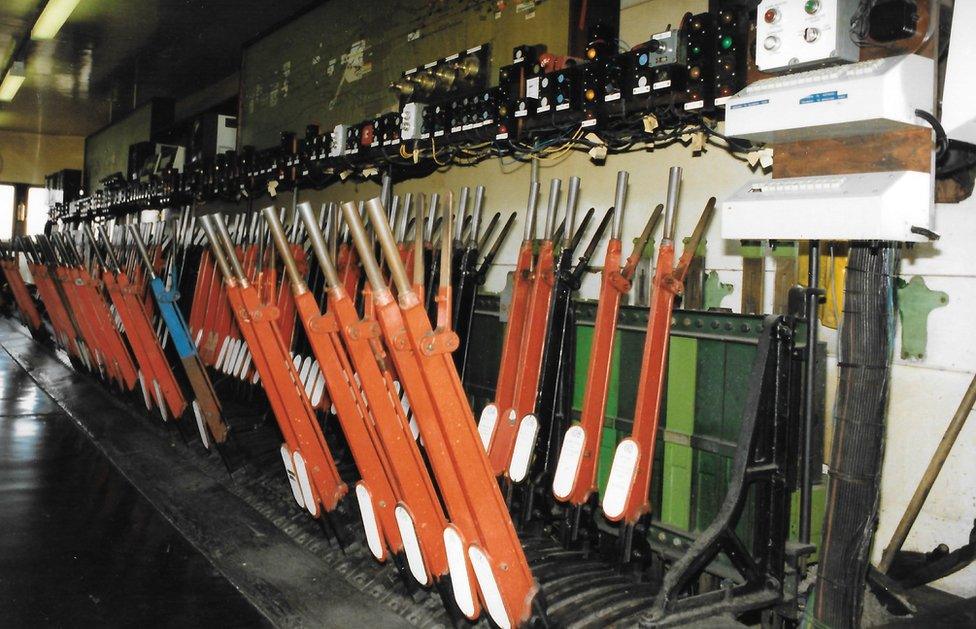
There are 360 traditional mechanical signal boxes similar to this still in use on Britain's railways
Similar technology has recently been introduced on the London Underground with dramatic improvements.
"We took the brave decision to invest in digital technology on the Underground allowing us to move trains much closer together," says David Waboso, the Tube's capital programme director, who has just been poached by Network Rail.
"There is no reason why we can't do the same."
Simple v complex systems
But Roger Ford, technical editor of Modern Railways Magazine, is sceptical as to whether London's success can be replicated nationally.
"You can't compare the relative simplicity of the Tube with the complexity of the main line system," he says.
"The Victoria Line is a basic end-to-end layout with identical stopping patterns and speed.
"The national network has a wide range of differing train types, speed differentials and complicated junctions so it's far more difficult to control."
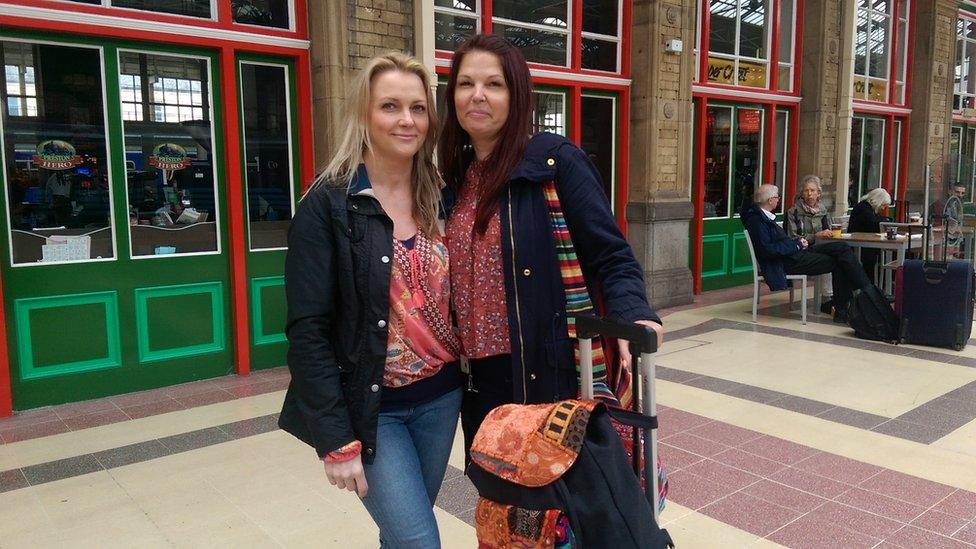
Cathryn Whitefoot and Rachel Upton say their trains are often late and overcrowded
But for long-suffering passengers, improvements can't come quickly enough.
'Even the Victorians were faster'
"I travel to both Manchester and Leeds and there is a real issue with overcrowding and reliability," says Cathryn Whitefoot from Burnley.
"Anything that speeds up the journey and makes it more reliable would be great."
Her friend Rachel Upton adds: "There have been four times when the local train to Preston has been late and I have missed the connection."

Scottish Council for Development and Industry boss Ross Martin says his journey takes longer than it did in the 19th Century
Ross Martin, chief executive of the Scottish Council for Development and Industry, says it takes him almost three hours to travel 150 miles by train from his home near Larbert to Inverness.
"This is clearly unacceptable - even the Victorians could do it faster."
'Unpleasant experience'
With passenger numbers set to double nationally over the next 25 years there is a growing realisation that some fundamental thinking is needed, and fast.
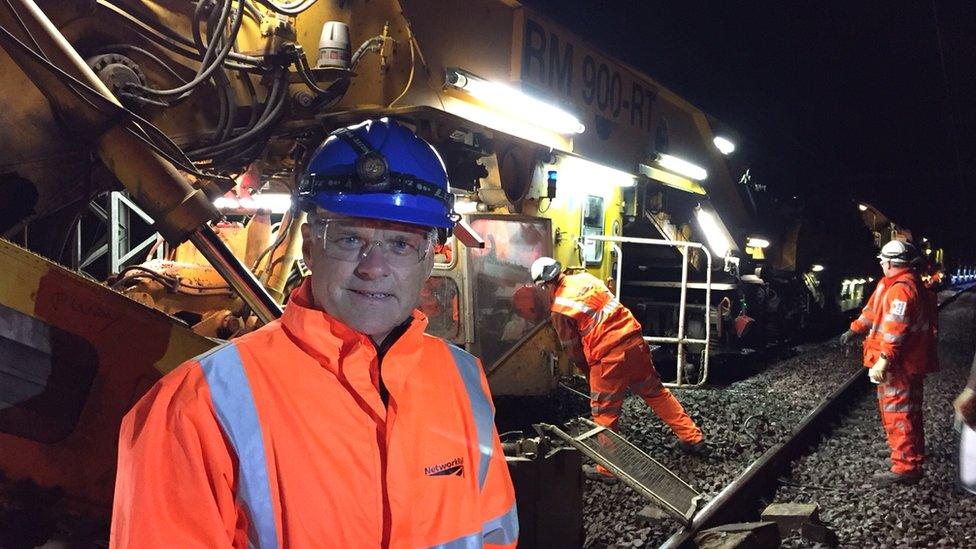
Network Rail's Mark Carne says the cost of digital signalling will be "significantly cheaper" than maintaining the current system
"Just because something has not been done before does not mean it can't be done," says Network Rail's chief executive Mark Carne.
"We currently leave passengers on platforms because trains are so full and if you can get on you are squashed up.
"People are paying thousands of pounds a year for season tickets for what is a pretty unpleasant experience."
Network Rail , externalis currently installing the digital system at a new rail operating centre at Romford in Essex, and plans to roll out the programme nationally from 2019.
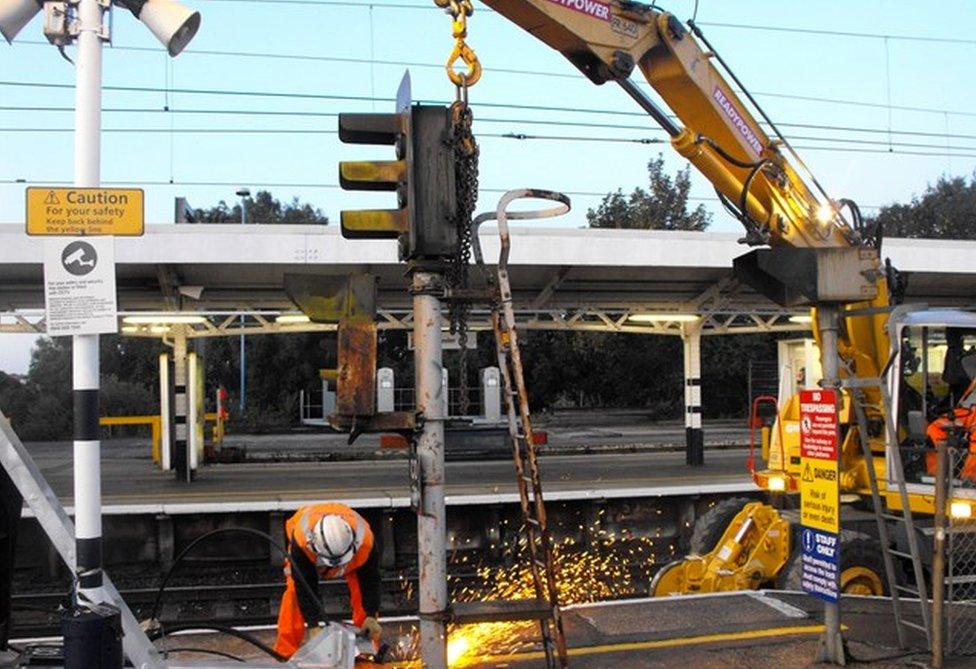
Old signals are removed and replaced by LED signals as part of the £104m Colchester to Clacton upgrade
It could take up to 25 years to finish but Network Rail hopes to speed this up to 15 years.
Last week, Mr Carne told the Transport Select Committee, external he was waiting for the fully outlined business case due later this year before putting a price on all this.
However, he said it should be significantly cheaper than the annual £800m bill for maintaining and running the current system.
Cheaper maintenance
The main problem is that railway signalling is piecemeal, having been added to rather than replaced over the decades. On older areas of the network spare parts are hard to find and it's costly to maintain and keep safe.
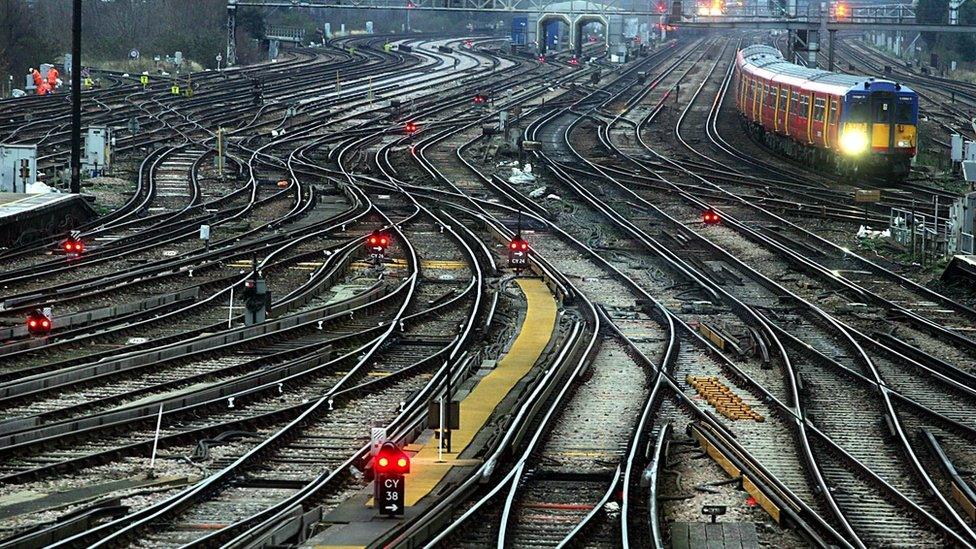
It's not just passengers, rail freight is also suffering from delays and overcrowding on the lines
"We are at a turning point and people in the industry are starting to realise that something has to change," says Patrick Bossert, transformational director of the Digital Railway project.
"A digital system would give us a much improved and lower-cost railway to run and to maintain."
And it's not just passengers who are suffering. Rail freight, worth £1.6bn to the UK economy, is seriously affected by a lack of capacity.
Freight train driver Robert Buchanan says he spends a lot of time waiting in sidings for a path. "It can take all day just to go a few hundred miles."
It's less than a fortnight since the Office of Road and Rail (ORR) delivered news of record poor punctuality and performance. , external
Network Rail is used to negative headlines but will be hoping that the ushering in of the digital age will bring about a change in fortune.